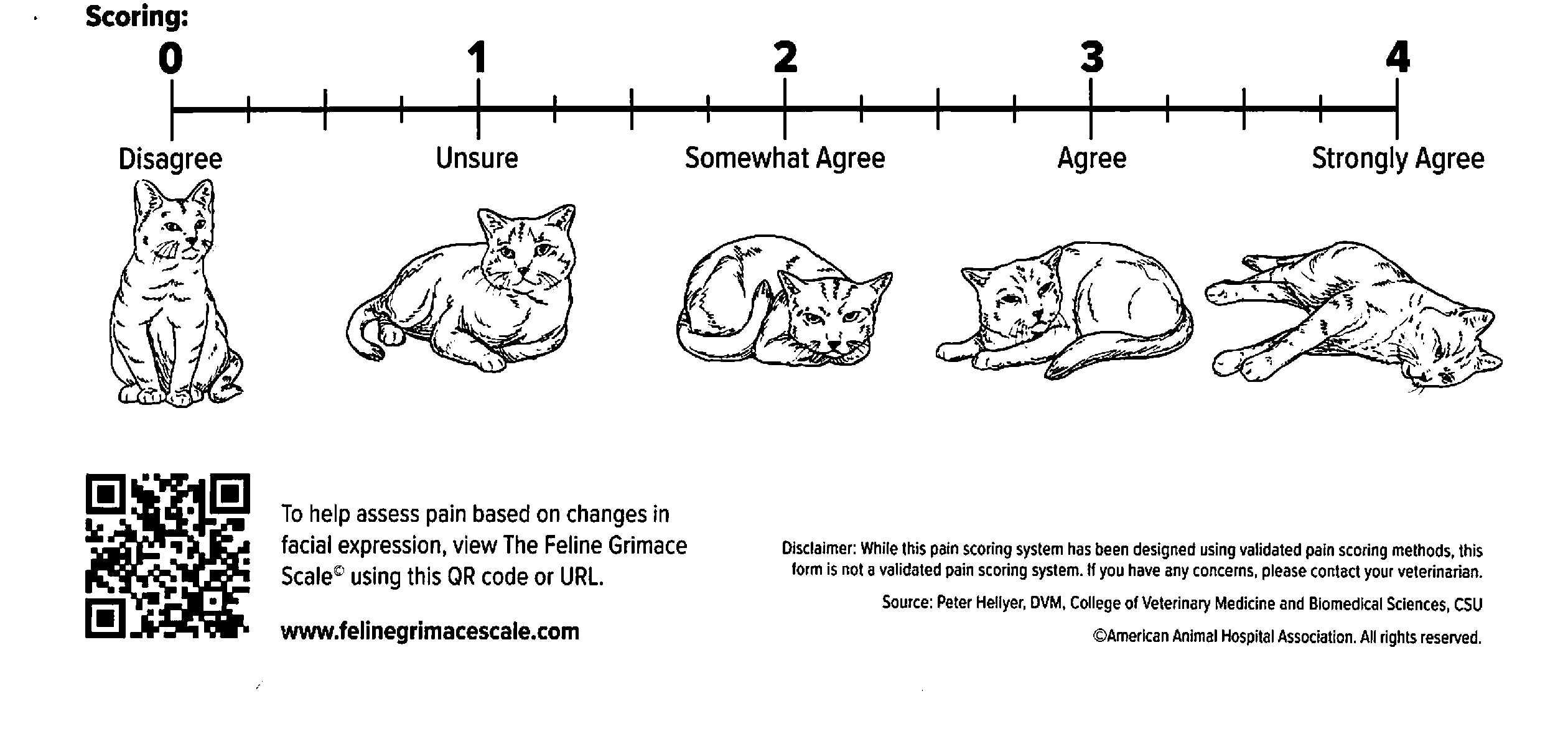AAHA In-Home Pain Assessment for Cats
Both humans and cats feel pain, but the way each experience pain can differ. This means no human or cat experiences pain the same way. Assessing pain in cats can be very difficult, even for veterinary professionals.
- Often, cats experiencing pain try to hide their pain as a survival mechanism.
- When cats begin to show their discomfort, this is often when a human feeling the same level of pain would seek medical attention!
- Pain and discomfort may not always be displayed with the signs you’d expect, such as a high heart rate or limping, but can show up with a subtle or significant change in a cat’s behavior or interaction with their environment, including you.
There are multiple kinds of pain that fit under two broad classifications of acute (adaptive) pain or chronic (maladaptive) pain.
Because pain can show up in various ways, pain researchers have come up with multiple charts, questionnaires, devices, etc. to assess pain in cats. Here we have combined some of those tools to assess the comfort level of your cat after a surgery or injury (acute pain), or as your cat ages and begins to experience age-related changes such as osteoarthritis (chronic pain).
How to use this form: Using the scoring system below, write down how you think your cat scores for each description. In addition, use the visual aids to categorize your cat’s overall demeanor/facial cues, being aware that every cat is different and that these illustrations specifically refer to how cats may look when they are in pain (for example, it may be perfectly normal for your cat to look like the image on the right when he/she is sleeping). If your cat has scores of 2 or above (even on only one description), it is time to call your veterinarian. Do not give any medication, even over-the-counter medications such as aspirin, without consulting your veterinarian first.

